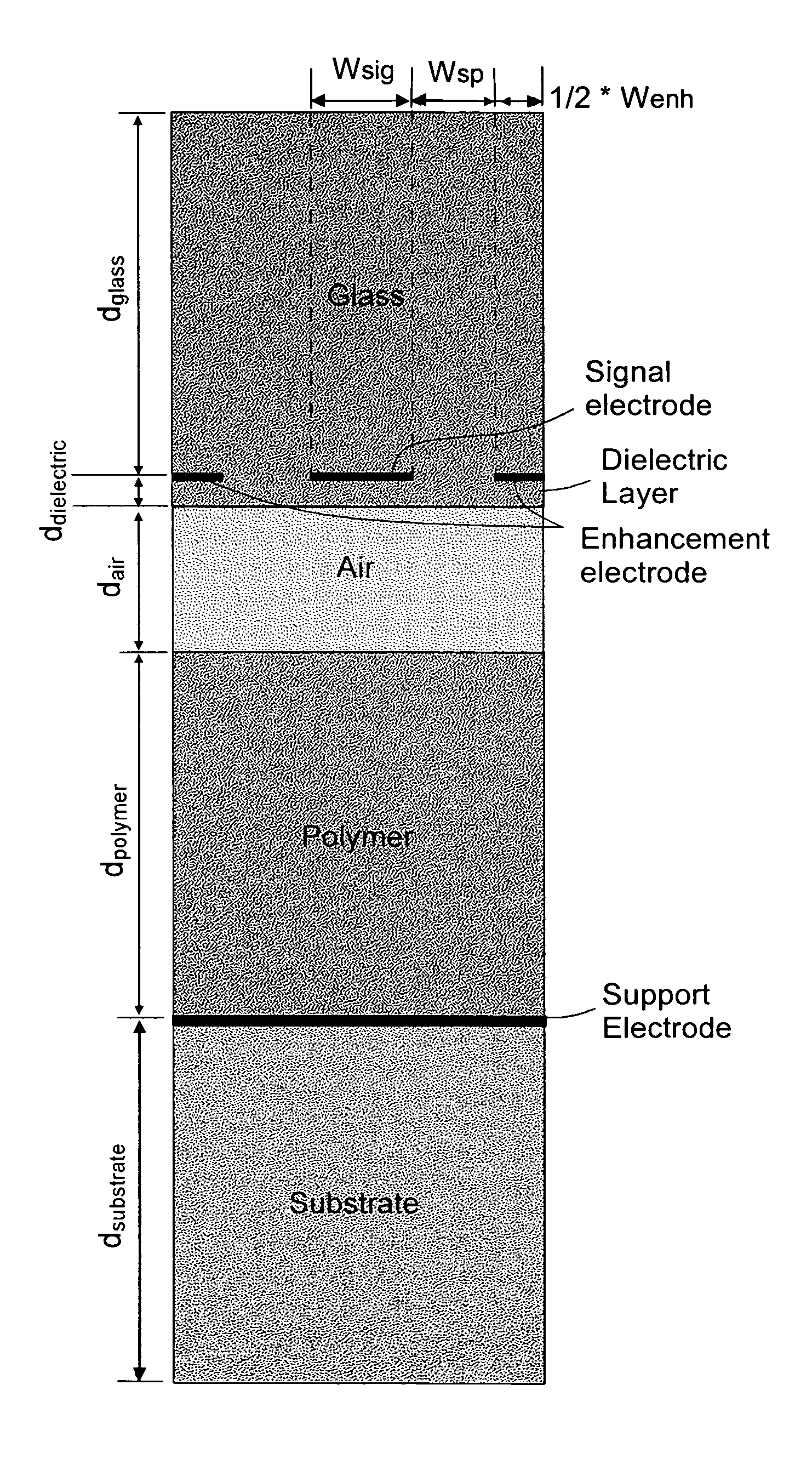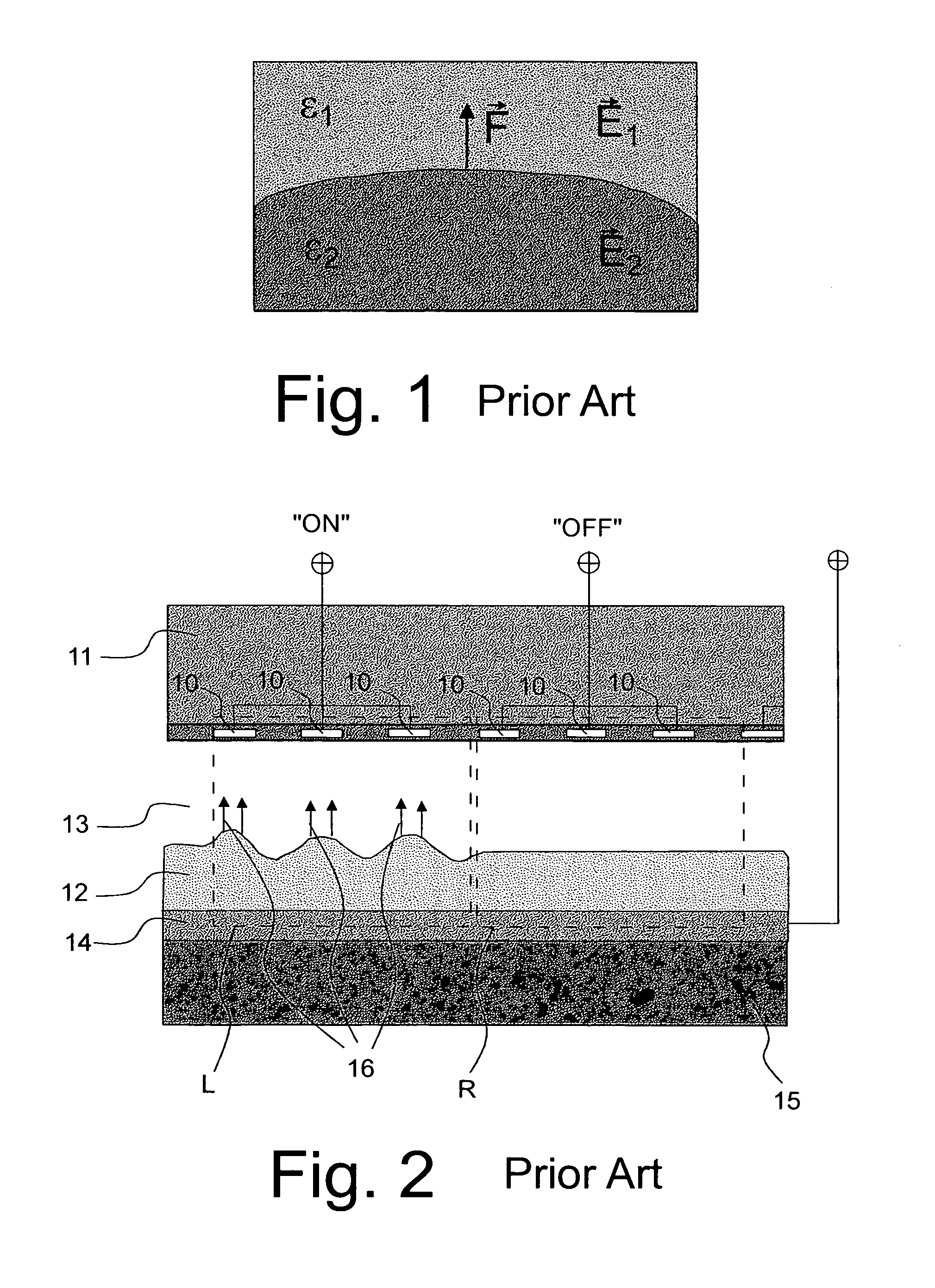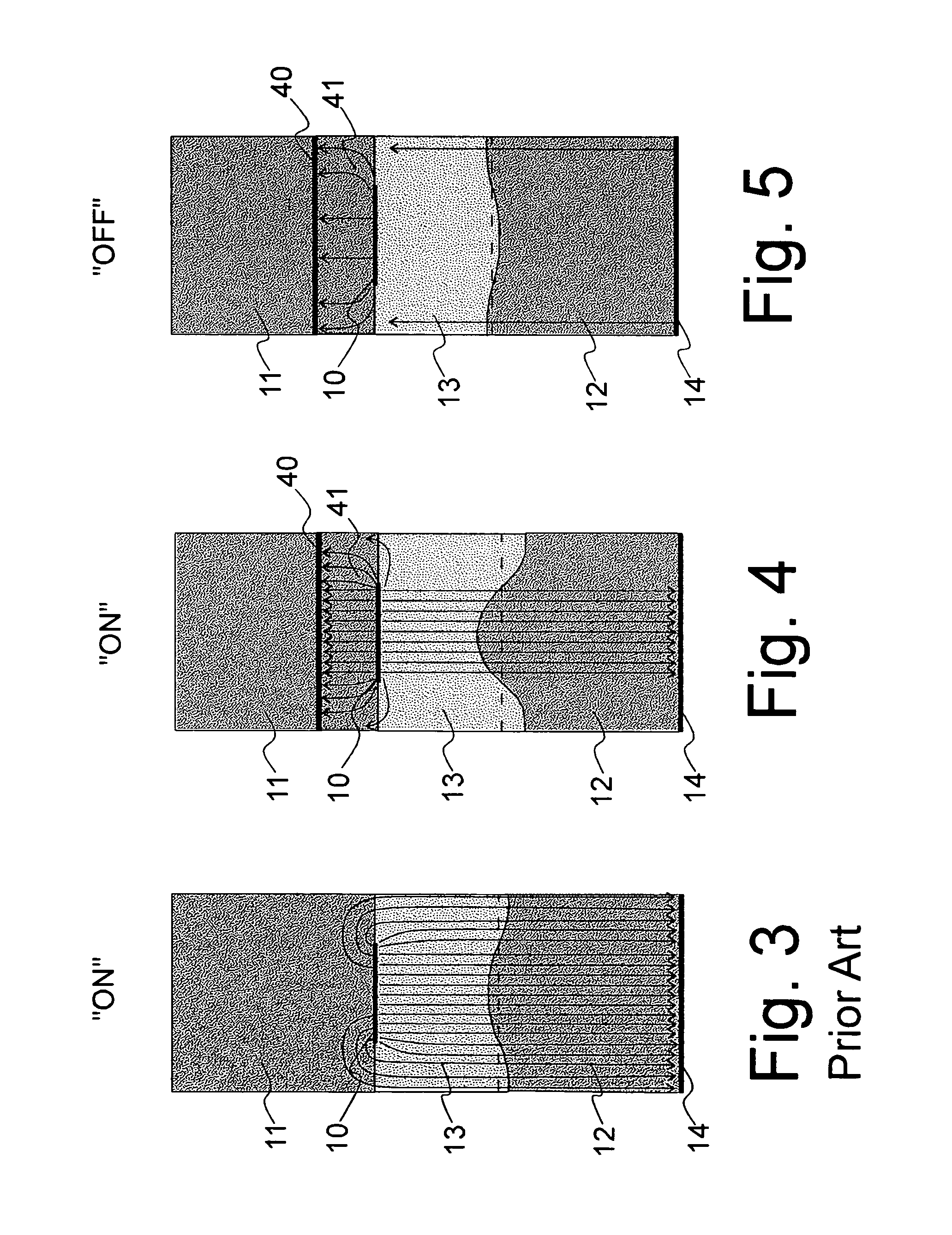Enhancement electrode configuration for electrically controlled light modulators
a technology of light modulator and enhanced electrode, which is applied in the direction of active addressable light modulator, instruments, optics, etc., can solve the problems of impairing the light modulation capability of the device, the difficulty of producing desired profiles, etc., to facilitate enhanced active deformation of viscoelastic material, shorten the response time, and increase the diffraction efficiency of the light modulator cells
- Summary
- Abstract
- Description
- Claims
- Application Information
AI Technical Summary
Benefits of technology
Problems solved by technology
Method used
Image
Examples
Embodiment Construction
[0043]In the following, the enhancement electrode configurations according to the invention are described in more detail and their benefits compared to the prior art solutions are pointed out using selected simulation results.
[0044]It should be noted that when the invention is applied to display devices, the concept of a cell corresponds closely to a single pixel of a display. However, the invention is not limited to display devices, but can be applied broadly also to other type of light modulators. Therefore, the term cell is mainly used in the following description.
[0045]FIGS. 3-5 illustrate schematically a single sub-cell cell structure used for the numerical computer simulations. The sub-cell comprises one signal electrode 10 plus half the spacing to the next adjacent signal electrode on each side. Therefore, a complete cell comprises in this example case all together three adjacent signal electrodes in a manner similar than presented in FIG. 2. A practical cell (or pixel) can c...
PUM
| Property | Measurement | Unit |
|---|---|---|
| distance | aaaaa | aaaaa |
| viscoelastic | aaaaa | aaaaa |
| electric field | aaaaa | aaaaa |
Abstract
Description
Claims
Application Information
 Login to View More
Login to View More - R&D
- Intellectual Property
- Life Sciences
- Materials
- Tech Scout
- Unparalleled Data Quality
- Higher Quality Content
- 60% Fewer Hallucinations
Browse by: Latest US Patents, China's latest patents, Technical Efficacy Thesaurus, Application Domain, Technology Topic, Popular Technical Reports.
© 2025 PatSnap. All rights reserved.Legal|Privacy policy|Modern Slavery Act Transparency Statement|Sitemap|About US| Contact US: help@patsnap.com



